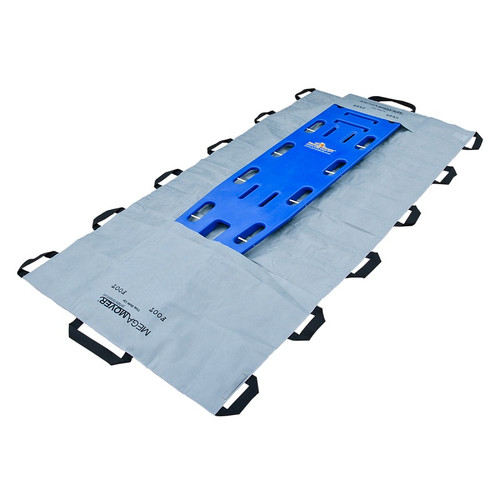- Highly specialized and robust device designed for safe and efficient patient transport and rescue in challenging environments
Common Uses:
- Popular choice for paramedics and first responders for safely moving patients from challenging environments
- Used for transferring patients within departments, to and from imaging, or for repositioning bariatric patients
- Aids staff in safely transferring and repositioning residents with mobility challenges
- Its portability, high capacity, and quick deployment make it invaluable for rapid patient evacuation and transport in large-scale emergencies
- Utilized by rescue teams to move individuals from accident sites or remote, hard-to-reach areas
Key Features:
- Advanced version of Graham Medical's popular MegaMover series
- Compact, cost-effective, and portable transport unit designed to transport, transfer, or rescue patients from areas inaccessible to traditional stretchers
- Makes it ideal for confined spaces, stairs, or difficult terrain.
- Made from nonwoven/poly (nonwoven fabric with a polyethylene layer)
- This construction provides durability, fluid resistance, and a latex-free design
- 40" x 80"
- Has a high weight capacity, often cited as being able to hold up to 1000 lbs.
- Equipped with 14 strategically placed handles
- These handles incorporate PowerGrips, designed to provide a more comfortable, secure, and ergonomic grip for rescuers
- PowerGrips significantly reducing hand strain and improving lifting control, especially during demanding or prolonged transfers
- As a "Plus" model, it features a standard backboard pocket which allows for the insertion of a rigid backboard
- Gray/Black colors
- Non-sterile
- Despite its high capacity, it's lightweight and folds compactly
- It's easy to store in emergency vehicles, medical bags, or closets, and it can be deployed very quickly when seconds count
- While designed for single-use in many critical scenarios to prevent cross-contamination, its durable construction may allow for limited re-use in certain non-medical emergency situations (though official medical guidelines would typically recommend single-use)







